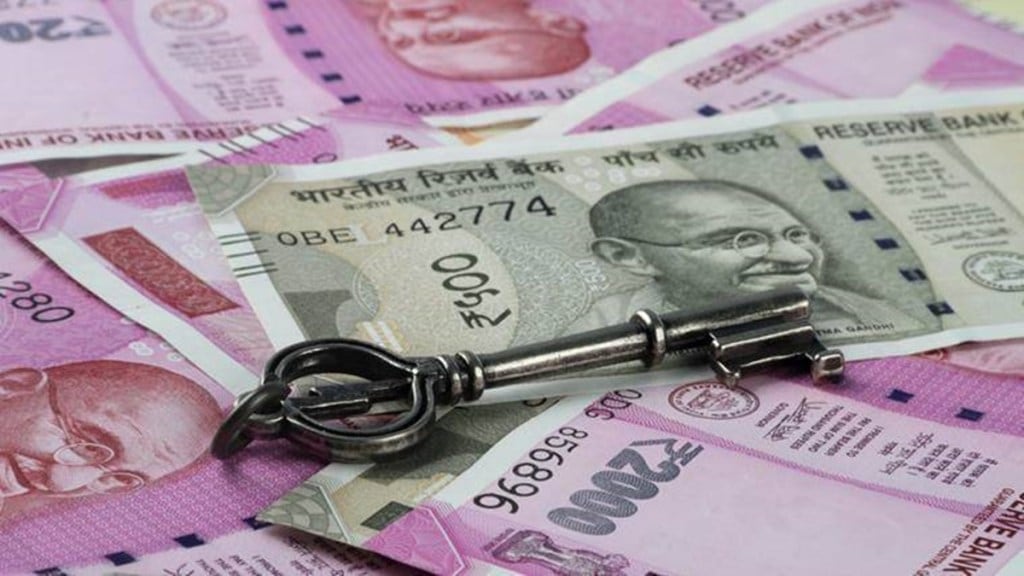The government expects the cost of borrowing through dated government securities (G-Secs) and treasury bills (T-Bills) to moderate, going forward, with the benchmark 10-year G-Secs likely to trend below 7%, aided by a sound borrowing strategy and declining inflation. The 10-year benchmark bond yield dipped below 7% for the first time in over a year on Thursday before closing at 7.014%, 1 basis point (bps) up from the previous close.
“We have reasons to believe that yields will come down further because there is no pressure on the market,” a government source told FE.
The 10-year G-Sec yield had increased by around 70 bps from 6.77% in February 2022 to 7.46% in February 2023 following a cumulative 250 bps policy rate hike by the Reserve Bank of India in the last year to rein in inflation. “Lower state government securities (SGS) issuance is partly contributing to the fall in G-Sec yields. Once SGS issuance picks up we would expect G-Sec yields to rise slightly,” Icra chief economist Aditi Nayar said.
Also read: India should introduce carbon-pricing system
Bank of Baroda chief economist Madan Sabnavis said the 10-year G-Sec yield will be in the range of 7-7.15% in the first of this fiscal and it will settle slightly higher at 7.15-7.25% in the second half as this will be the time when commercial credit also picks up.
The Centre’s borrowing plan for FY24 includes the entire market funding requirement of the Railways, the National Highways Authority of India and the Rs 1.3 trillion capex support to states.
As per the borrowing calendar, the government plans to borrow Rs 8.88 trillion or 57.55% of the total FY24 borrowing programme of Rs 15.43 trillion in H1. While the share of the 10-year segment has been kept relatively unchanged (21% of total H1 borrowing), there is an increase in supply at the longer-end (14, 30 and 40-year papers accounting for 51% of H1 FY24 borrowing compared to 44% in H1 FY23). It discontinued the issuance of 2-year papers. This suggests a deliberate strategy by the government to go for long-duration G-Secs to reduce the cost of funds.
The government has cut down T-Bills (91 days, 182 days and 364 days) issuances by 41% to Rs 1.42 trillion for Q1FY24 from Rs 2.42 trillion in the year-ago quarter. T-Bills are issued for short-term cash management and are mostly repaid within the year. “Large issuance of T-Bills was creating a distortion because their yields were almost mirroring 1-year and 2 years G-Secs rates,” the government source said.
The cutoff for the 91-day to 364-day T-Bills yields was in 6.9%-7% range on Wednesday and has remained around these levels in the past two weeks. “We wanted some kind of (yield) rate rationalisation,” the source added.
Also read: Govt plans incentives for maize production
T-Bill yields will be driven more by the liquidity situation, Sabnavis said. “Even yesterday (Wednesday), the cut-off for 364 was 7% while 10-year ended at 7.01%. Therefore, will be quite volatile during the year. But given that liquidity will be tight for most of the time, can expect 6.9-7.05% range in general,” Sabnavis added.
The cost of funds is crucial for the government finances as the interest payments are budgeted to rise by 14.8% to Rs 10.8 trillion in FY24 budget estimate (BE), accounting for 24% of total expenditure indicated for the fiscal. Given the sizeable increase in the Centre’s debt outstanding since the onset of the Covid-19 pandemic, analysts reckon there is a need to limit borrowings.

